As an Amazon Associate I earn from qualifying purchases.
Arctic Grayling, The Ultimate Anglers Guide

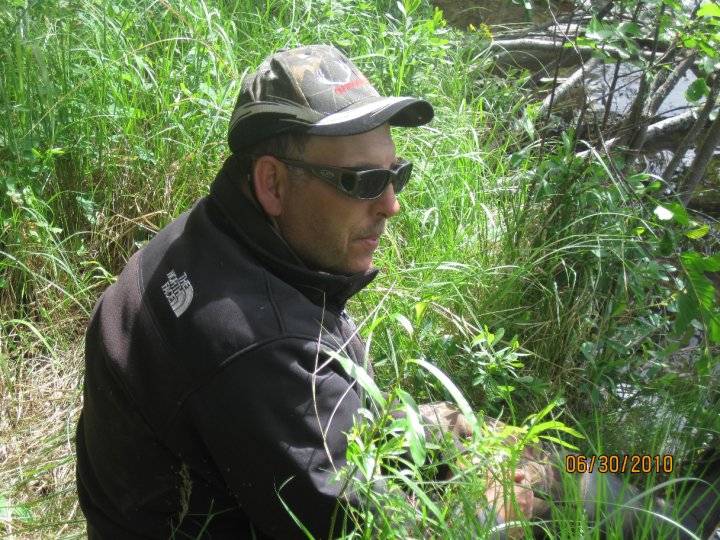
David O’Farrell started guiding anglers professionally in 1987 and has never looked back. Along with his wife, Reggie, they now own Grizzly Creek Lodge, where he first started guiding 36 years ago. David still spends every summer guiding anglers from all over the world. This post is for anglers who want to learn more about the arctic grayling After 36 seasons on the water, David has a tremendous amount of experience to share.
You might see product links on this page. They are our affiliate links and we will earn a small commission if you choose to purchase anything through them. If you do, we would like to thank you in advance; it helps us keep this site up and running. There is a lot of useless junk on the market today, but you can rest assured that we don’t promote anything we haven’t used ourselves. Tight lines, Dave & Reg
Description of the Arctic Grayling
Arctic graylings ( Thymallus Arcticus ) are considered by many to be one of the most beautiful of all freshwater species. A member of the salmon family, the Arctic grayling is a cold-water species that thrive in clear, undisturbed water.
Six species of grayling inhabit the northern hemisphere, but the Arctic is the only grayling species found in North America.
Arctic graylings have a sail-like dorsal fin dotted with iridescent blue or purple spots and tinged with red. Coloration can vary depending on geographical location, but their backs are usually dark gray, and their sides can be silver, gold, or blue, and often freckled with dark spots.
Where to go Fishing for Arctic Grayling
The arctic grayling is abundant throughout the Arctic, from the eastern shores of Hudson Bay to as far west as the Kara river in Russia. Once common in the northern United States, this species has all but disappeared from the contiguous 48 states.
An isolated population still exists in southwestern Montana, but anglers will need to travel to northern Canada or Alaska for the best fishing opportunities.
The Yukon Territory is home to some of the best arctic grayling fisheries left in the world. Abundant in most streams, rivers, and lakes throughout the Territory, grayling are a popular game fish for resident and nonresident anglers alike.
Vulnerable to Pollution and Erosion
Arctic grayling need cool, clean water and are more vulnerable to erosion and pollution than other species. Small clear streams and rivers with a good mixture of shallow riffles and deep eddies are prime habitats for this species. Large adults will lay claim to the deeper holes, while smaller grayling prefer warmer, shallower water.
Although present in many, if not most, of the larger lakes in the Yukon Territory, arctic graylings are harder to locate in this environment. Anglers will have the best success on large water bodies if they focus on inflowing and outflowing streams and rivers.
Log jams that form on rivers and streams are often hotspots later in the summer. Grayling will congregate around the submerged logs feeding on aquatic and terrestrial insects.
Jet boats & Arctic Grayling
In parts of northwestern Canada ( and I expect Alaska), jet boats are wreaking havoc on arctic grayling populations. This is an issue you won’t hear much about, but it’s happening nonetheless. A jet boat engine drives a powerful jet pump that sucks water up through an intake and shoots it out at very high pressure.
When the boat is driven over shallow spawning beds, the eggs are sucked up off the bottom. One or two boats probably wouldn’t be an issue, but there are rivers where there might be a dozen jet boats out every weekend, and this, of course, takes a heavy toll on the arctic grayling population. The solution to the problem is to educate sportsmen and women to keep jet boats away from shallow areas during June.
How Big do Arctic Grayling Get
The largest arctic grayling on record measured 30 inches in length and weighed just over 8 pounds. That’s much larger than the average, though. An average for the species will measure 14-16 inches in length and weigh approximately 2 lbs.
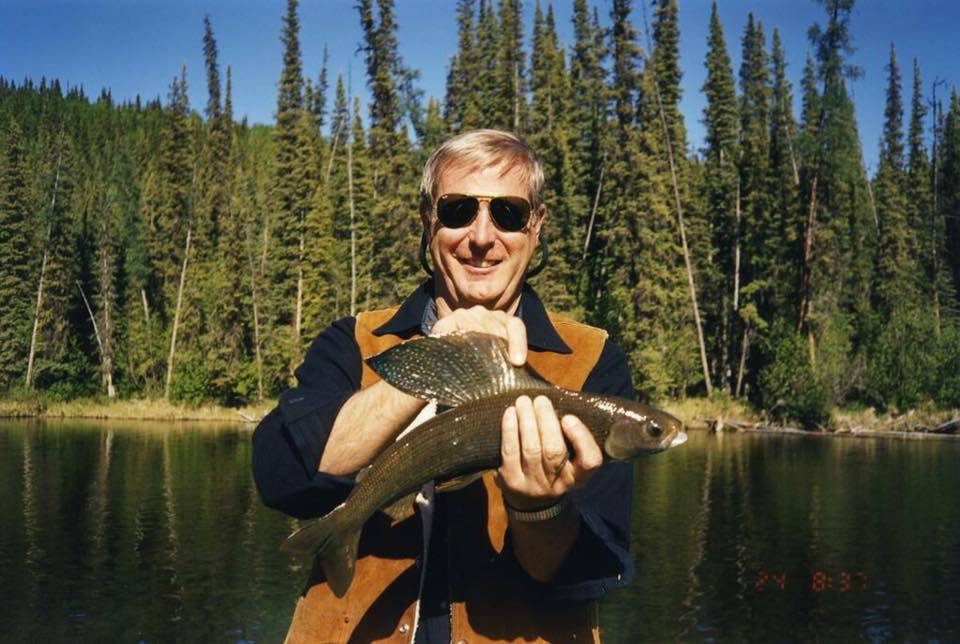
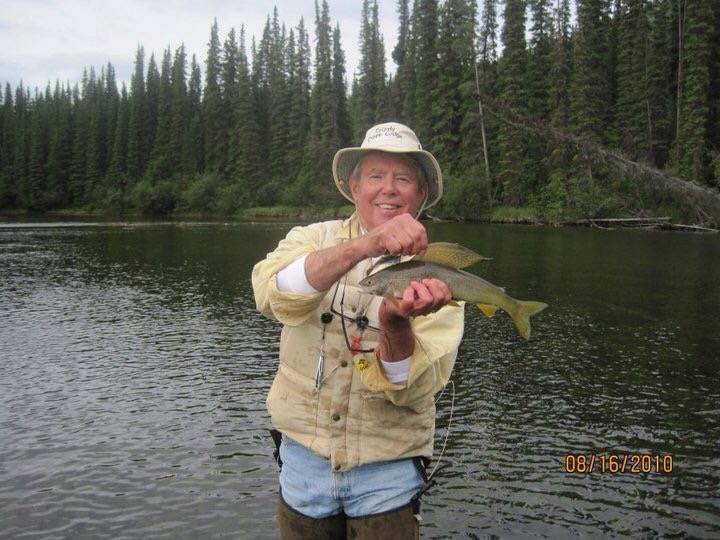
Lifespan
The expected lifespan of an arctic grayling depends on its habitat. Ages over 30 years have been observed in Arctic regions, whereas fluvial populations in Montana rarely live beyond five years. Fluvial graylings in Canadian and Alaskan waters won’t mature until they are four years old and commonly live to 12 years.
Spring Spawners
Arctic grayling move into tributaries soon after ice out in preparation for the spawn. The spawn takes place over shallow gravel beds in small streams and rivers.
Some grayling populations are known to migrate long distances to favored spawning locations. Arctic grayling in the Yukon and Alaska will spawn for the first time between 4 and 6 years of age. A single female can deposit as many as 30,000 eggs. Since the eggs are heavier than water, they will sink to the bottom, where they lodge in the gravel.
The fry hatch about three weeks after the spawn and immediately move into warmer waters along the shoreline. The fry grows quickly and will reach lengths of 4 inches by summer’s end.
Immediately after the spawn, adult arctic grayling will move into their summer feeding areas.
What do Arctic Grayling Eat
Arctic grayling have a voracious appetite during the short summer season. Although their primary food source is terrestrial and aquatic insects like mayflies, stoneflies, and caddis, they will also eat small mammals when the opportunity arises.
During certain times of the day, these fish will go into what could be called a feeding frenzy. I’ve seen them take flies and spinners held four inches above the water’s surface; this contrasts sharply with their feeding habits during the winter months. Once the lakes and rivers freeze over, grayling feed minimally.
How to catch arctic grayling
Arctic grayling go through three distinct phases during the short arctic summers. Understanding these phases will help anglers find productive locations.
In the early summer, adult grayling will be on the spawning beds. During this phase, anglers should target areas near shallow gravel beds.
When the spawn is over grayling will immediately move into deeper water. They will spend the rest of the summer in these feeding areas and use the same feeding areas yearly. Here at Grizzly Creek Lodge, grayling will start to move deeper by the second half of June.

The third and final phase usually takes place in late August and will last until freeze-up. During this phase, arctic grayling migrate back to their wintering areas. This migration period can be one of the most productive times to fish this species if you know where to fish.
Streams or river mouths near large lakes are ideal locations to take advantage of the fall migration. Large numbers of arctic grayling will school up in these areas. In larger rivers, look for deep holes out of the main current.
Avoid These Mistakes
One of the most common mistakes I see anglers make in moving water is casting lures directly up or downstream. Casting upstream is a mistake because to keep the lure off the bottom, your retrieve will need to be faster than the current. A fast retrieve won’t look natural. Casting downstream is just as bad. Insects don’t move upriver.
The best way to fish for grayling is to cast upstream and across moving water. With your body facing upstream, cast across and upstream at a 45-degree angle. When you start the retrieve, your lure will move across and downstream, giving it a more natural appearance.
Accurate Casts
Although arctic grayling are easy to catch, your casts need to be on target. Large adults don’t move very far. They don’t have to. You will often see them take a short swipe at a lure as it comes by, but they won’t chase it very far.
They will sit suspended behind submerged logs or on the downstream side of trees lying on the surface of the water. The ability to cast accurately in these situations is important.
Best spinning rods/ reels for arctic grayling
An ultralight rod with a spinning reel capable of holding 150 yards of 4-6 lb line is the best bet for spin anglers. Since the best arctic grayling habitat is around logs, boulders, and such, a braided line is our favorite for these fish. The extra strength of braid comes in handy when freeing a snagged hook. Arctic grayling are not spooked by fishing lines like lake trout are.
Spinners, Spoons and Jigs
The best lure choices for arctic grayling depend on the time of year and water depth. Small spoons and jigs are best later in the season when the adults are down near the bottom of deep holes. Spinners will work in these situations but are more challenging to fish deep. Spoons like Eppingers Dardevle Skeeter and lead head jigs from 1/4 to 1/8 ounce are the best bet in these conditions.
Panther Martin are hands down the best spinner money can buy for arctic grayling. Over the past 34 years, we have tested Panther Martin spinners side by side against every other brand on the market. It’s common for them to beat the competition five to one. The blade action is visibly more aggressive on a Panther Martin than other brands, and it makes a difference. They are a top choice for arctic grayling. For the best prices look here


Fly Rods for Arctic Grayling
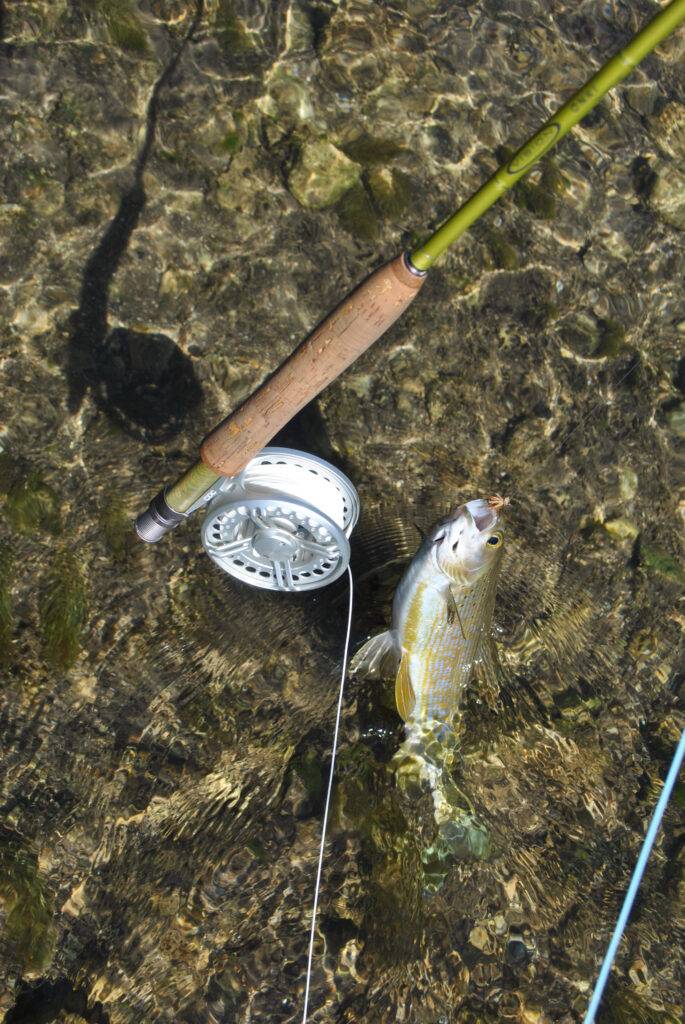
My favorite fly rod for arctic grayling is a 3 wt. A 5/6 wt. rod will work fine, but a 3 wt. just feels right for these fish. A moderate fast-action rod works well for me, although I know a lot of accomplished flyfishers prefer a slow-action rod for dry flies. The reality is that arctic graylings are not picky, so you don’t need to worry much about a soft presentation. The Moonshine Rod Company makes excellent reasonably priced fly rods, and their warranty is superb. Their 3 wt. Vesper comes with an extra tip which is a real bonus. See it here.
Weight-forward fly lines will make reaching across rivers and streams easier and are better in windy conditions. Since presentation isn’t that critical with these, fish a shorter leader works fine and is easier to maneuver in tight quarters. We run seven foot 5X tapered leaders on all of our grayling rods.
Top 5 Dry Fly Patterns for Arctic Grayling
Our dry fly patterns for arctic grayling are tied on size 14-16 hooks.
Elk Hair Caddis:
The caddis is a hard fly to beat when arctic grayling are your target. There is nothing else to say about this time-tested pattern. If I could only have one dry fly in my box, it would be the elk hair caddis.
Black Gnat:
The black gnat is another top grayling fly. This pattern is harder to see than a caddis, but put it in the right spot and be prepared to set the hook. Arctic grayling will slurp it off the surface as fast as you can put it in front of them.
Adams Parachute:
As one of the most popular dry flies for trout, this fly needs no introduction. Arctic grayling will take this pattern as quickly as trout will.
Royal Wulff:
The royal Wulff is our go-to fly on overcast days, or anytime we are working low visibility water, like riffles or eddies in fast water. The Royal Wulff is a good attractor pattern, so you can use it if you are unsure if a hatch is happening.
Bumble Bee:
It might surprise some to see this pattern on our list, but it is a very productive dry fly for arctic grayling. Like the Royal Wulff, it is easy to see and is a good attractor pattern.



Best 5 wet flies for arctic grayling
Bread and Butter Caddis Emerger:
The bread and butter caddis is a classic emerger pattern. This is one of our favorite patterns when grayling are taking flies just below the surface.
The RS-2 Emerger:
The RS-2 is a classic emerger pattern. This fly will take grayling throughout the summer, but seems to be especially effective later in the season.
Mop Jig:
The mop jig is our number one producer when arctic grayling are feeding deep. This little gem should be in every angler’s fly box!
Hare’s Ear Beadhead:
The Hares Ear Beadhead mimics a wide variety of insect species. The bead head quickly gets this nymph down below the surface and is always a great choice.
Holy Grail:
The Holy Grail mimics various insects and is an excellent choice for grayling. This pattern is a favorite around submerged logs and brush because it doesn’t sink as fast as others.
Are Arctic Grayling Good to Eat
Grayling are very delicate and flavourful fish. Best eaten fresh, they can be either baked or fried. One of our favorite ways to cook them is baked over an open fire. Prepare the fish either cleaned and whole, or filleted. Then wrap in tinfoil and bake with some lemon and lime slices.
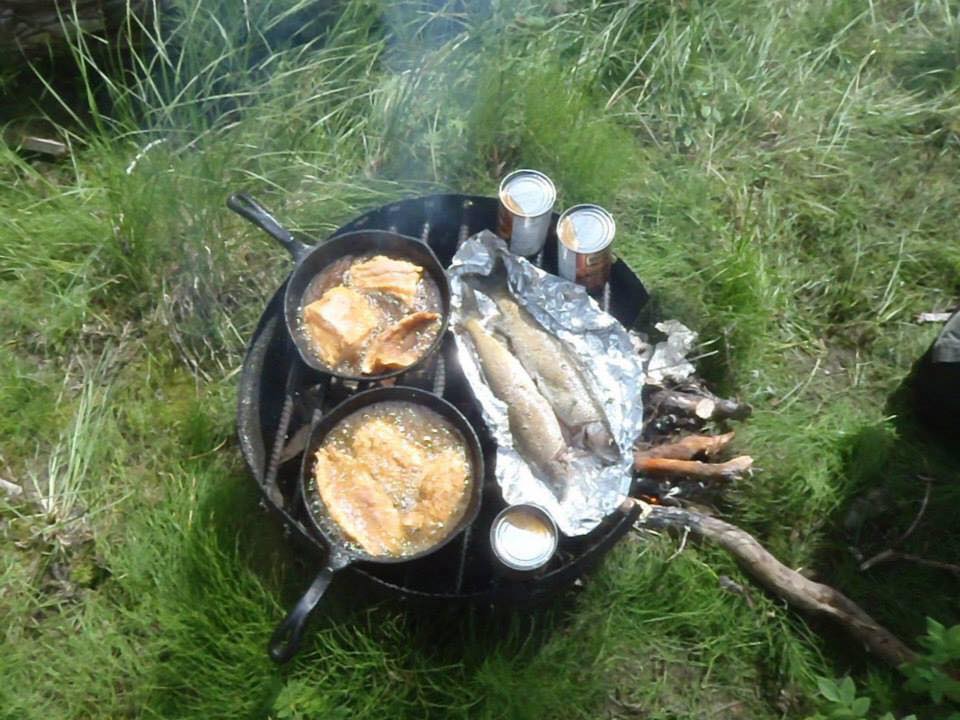
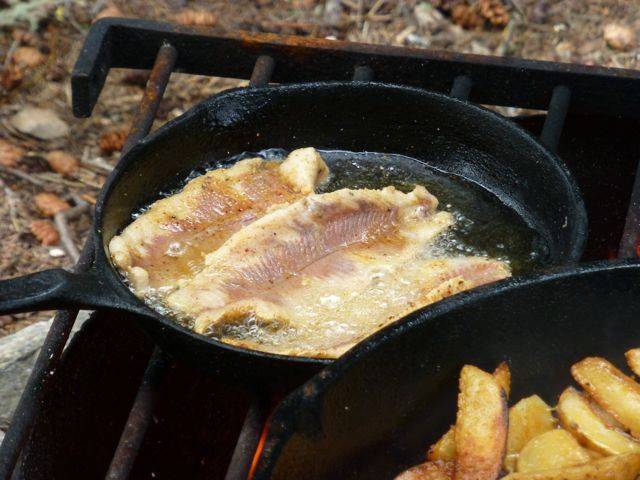
Amazon and the Amazon logo are trademarks of Amazon.com, Inc, or its affiliates.